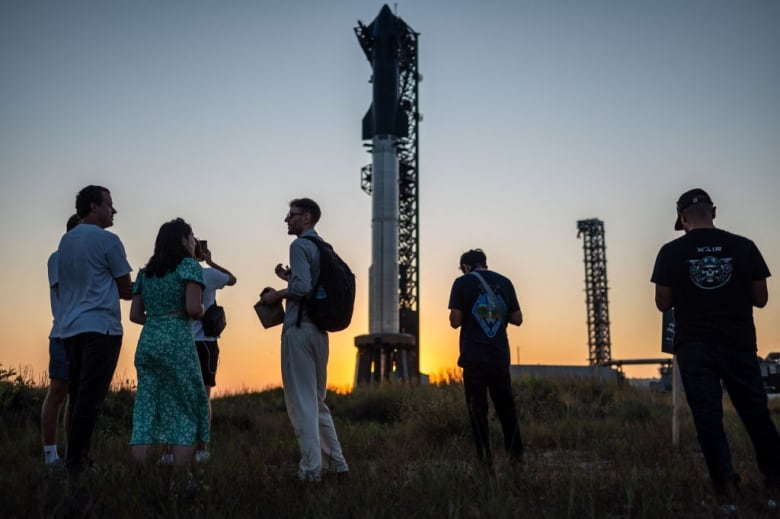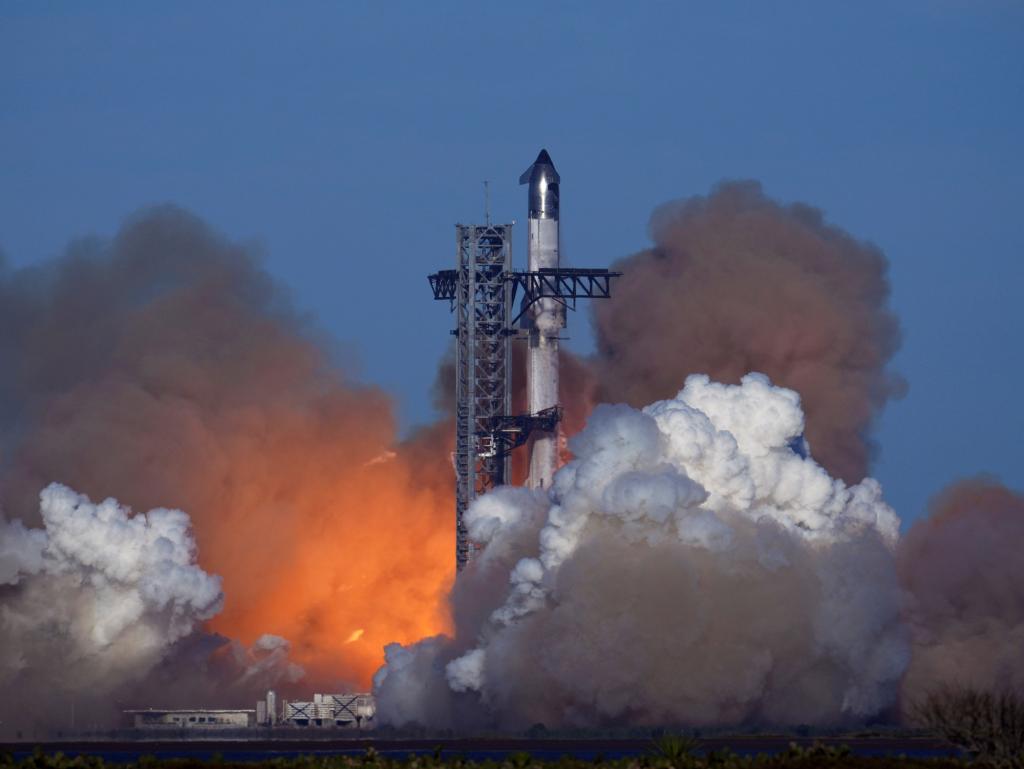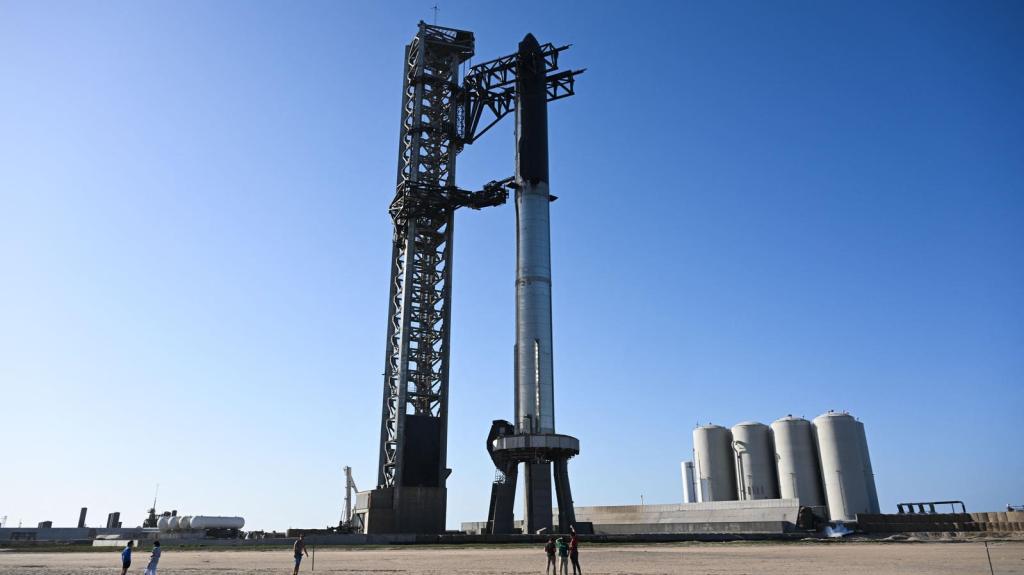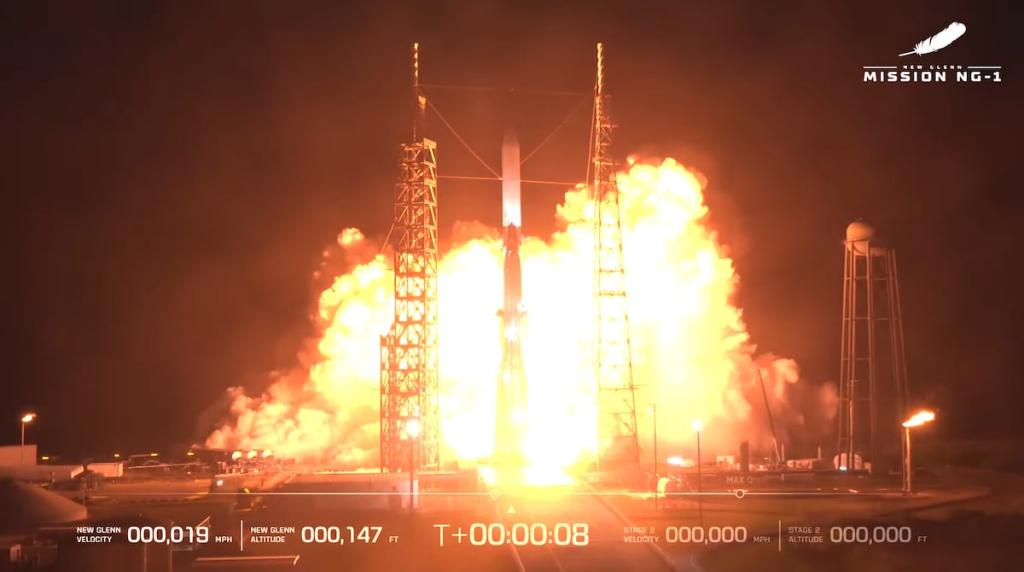SpaceX Achieves Milestone with Starship Booster Recovery
SpaceX's latest Starship test flight successfully captured its Super Heavy booster mid-air, marking a revolutionary step forward in space travel technology.

Key Points
- SpaceX
's fifth Starship test flight successfully captured its Super Heavy booster mid-air, showcasing innovative recovery technology.
- Over 12,000 engineering hours were dedicated to enhancing the Starship's heat shield, leading to a more successful mission.
- The advancements made during this flight bolster SpaceX's ambitions for future lunar and Martian missions.
The landscape of space exploration is rapidly changing, thanks in large part to innovative companies like SpaceX. In a major milestone achieved on October 13, SpaceX successfully completed its fifth test flight of the Starship spacecraft, marking a significant advancement in space travel technology. This blog post will delve into the remarkable aspects of this flight, particularly the unprecedented capture of the starship's Super Heavy booster mid-air using massive mechanical arms, an innovation that promises to revolutionize future launches.
The Historic Launch
On a bright Sunday morning, the journey began as SpaceX launched its towering Starship rocket from
, Texas. At approximately 7:25 a.m. local time (12:25 GMT), the 121-meter rocket, equipped with 33 powerful Raptor engines, took off flawlessly. In a spectacular display of engineering elegance, the Super Heavy booster was separated from the spacecraft and was successfully maneuvered back to the launch pad, a feat reminiscent of science fiction.

Innovation at Its Best
SpaceX's recent flight showcased a novel recovery method involving large metal arms, referred to as the "chopsticks", which deftly caught the descending booster. This booster, after reaching an altitude of approximately 74 kilometers, returned to its launch pad after deploying technologies that have been refined over months of engineering efforts. Notably, more than 12,000 hours of work were invested by SpaceX engineers to enhance the ship’s heat shield in preparation for this significant test.
The engineering prowess exhibited here is not merely for spectacle; it embodies a vision for the future of space travel that aims to reduce costs and increase feasibility. CEO
envisions a system where these boosters can be reused, much like the
rockets that SpaceX has successfully recovered for almost a decade now. This recycling method drastically cuts launch costs and accelerates mission timelines, a crucial factor as humanity sets sights on reaching the Moon and Mars.
Achievements and Future Goals
This fifth test flight stands out not just for its successful booster recovery but also for the successful testing of Starship's capabilities. The mission included an atmosphere re-entry trial, further underscoring the spacecraft’s potential for interplanetary travel. At the end of the flight, while the booster was captured with precision, the upper stage of Starship continued its course into the
, perfectly demonstrating the dual objectives of the mission.
Moreover, SpaceX is now preparing for further tests, with Flight 6 already greenlit by the
(FAA). This anticipated next step highlights the momentum behind SpaceX’s ambition to establish a human presence on Mars, aiming to construct a self-sustaining city by the year 2050. The successful technologies demonstrated in this launch will surely play a pivotal role in fulfilling this audacious dream.
The Community Impact
SpaceX's accomplishments have not only paved the way for advancements in aerospace technology but have also inspired a renewed interest in science and engineering among young people worldwide. The excitement surrounding missions like the recent Starship flight illustrates the power of innovation to energize communities and encourage the next generation of engineers, scientists, and explorers. As we witness historic moments like this, the narrative around space travel continues to evolve, making it more accessible and exciting than ever before.
SpaceX's successful fifth Starship test flight not only represents an engineering triumph but also marks a significant step toward the future of sustainable space travel. As new technologies and methods are developed, the implications for regular access to space and interplanetary colonization become increasingly realistic. The journey has just begun, and the potential for discovery and advancement in this field is limitless.


